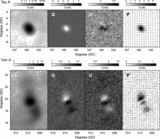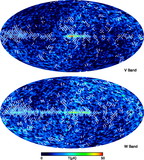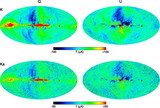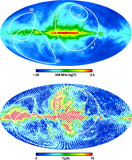Image Details
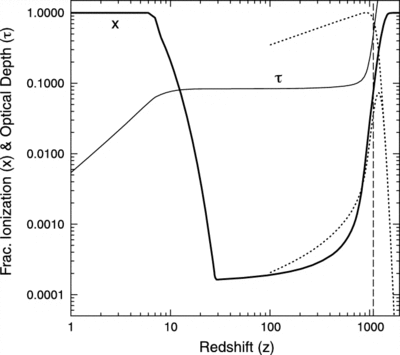
Caption: Fig. 1.
Model of the ionization history of the universe. The line marked with an "x" is the ionization fraction, ﹩x=n_{e}/ n﹩, where ﹩n_{e}﹩ is the number of electrons and ﹩n=11.2\omega _{b}( 1+z) ^{3}\ \mathrm{m}\,^{-3}﹩ is the number of protons with ﹩\omega _{b}﹩ the baryon density. From quasar absorption systems we know the universe has been fully ionized since at least ﹩z\approx 6﹩. Between ﹩6\lesssim z\lesssim 30﹩ the first generation of stars ionized the universe. We show a possible model inspired by Holder et al. (2003). The history for this period is uncertain although the reionization produces a characteristic signature in the CMB polarization. For ﹩30< z< 2000﹩, we show decoupling as described in Peebles (1993). The line marked τ is the net optical depth, ﹩\tau ( z) ﹩. The dashed curves are the integrands in the numerator (bottom) and denominator (top) of eq. (1) (divided by 200) for the ﹩100< z< 2000﹩ region. By eye, one can see that the ratio of the integrals at the maximum, and thus the fractional polarization, is ﹩\approx 5﹩%. The vertical line marks the redshift of decoupling, ﹩z_{\mathrm{dec}\,}=1088﹩, at the maximum of the visibility function (not shown).
Copyright and Terms & Conditions
© 2007. The American Astronomical Society. All rights reserved. Printed in U.S.A.


